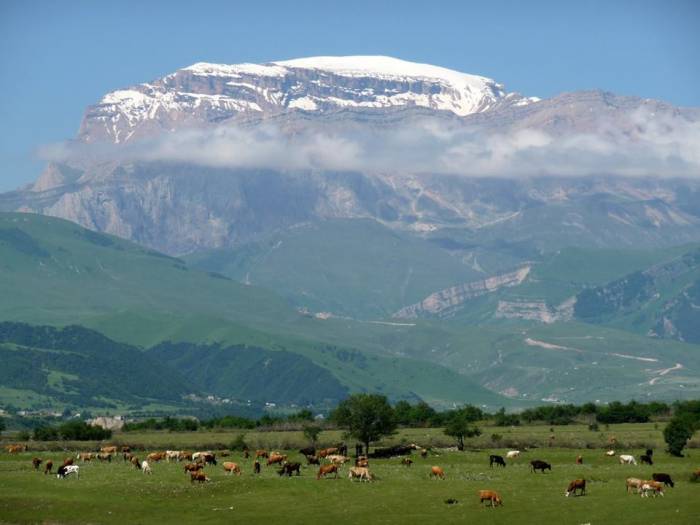We bring to your attention the description of several settlements located in the picturesque parts of Azerbaijan, acquaintance with which will give you unforgettable impressions for many years!
Laza and Sudur in Gusar
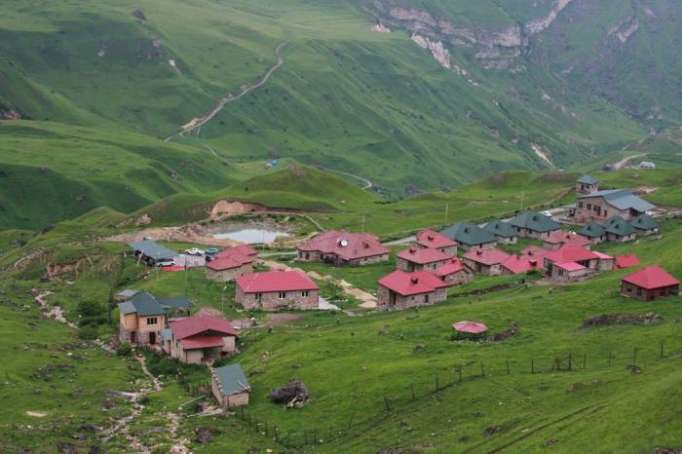
The amazing village of Laza located in the Gusar region, huddles in a picturesque valley between the mountains at an altitude of 1300 m above sea level. In fact, there are two villages in Azerbaijan with the name Laza, or, more correctly, it is said that this is one village, consisting of two parts. The other part is located on the neighboring mountainside, on the bank of the river Demirchay, on the territory of the nearby Gabala district.
In Laza there live lezgins or leks - an autochthonous people, whose history is connected with the Caucasian Albania - one of the most ancient states in the territory of Azerbaijan. Even the ancient authors wrote about Caucasus-speaking tribes in the northern part of Azerbaijan, among which are mentioned Leks.
In the Gusar village of Laza about 30 houses, in which about 150 residents live, there is an elementary school. Residents communicate with each other in their native Lezghian language, but they are fluent in Azerbaijani and Russian languages. The inhabitants of Lazy live the usual life of high-mountain settlements, conduct housekeeping, keep domestic cattle, in summer driving their herds to mountain pastures.
The oldest sight of Laza, located right in the center of the settlement is a historical mosque, which is over 300 years old. Special attention deserves the neighborhood of the village, where in the mountain gorges are the most beautiful waterfalls. In winter, on frozen waterfalls, climbing and mountaineering competitions are often held.
Laza is one of the most visited villages of Azerbaijan. There are many guests all year round. Especially these places attract foreigners interested in ethnotourism. Travelers, as a rule, rent rooms in the homes of local residents. Although there are several tourist centers near Laza, the most famous of which is the Shahdag Tourist Center.
Another Lezginian village Sudur is the extreme settlement of the Gusar region, located on the slopes of Shahdag mountain at an altitude of 1800 meters above sea level. The road to the village runs along the slopes of the mountains above the precipice, from where a breathtaking panorama opens. In the spring, these slopes are covered with flowering alpine meadows against the background of the snowy peaks of Shahdag.
In the village of Sudur, the traditional way of life has been preserved. Here, tourists can buy handicrafts, familiarize themselves with the customs and traditions of the local population, with the life and folklore of the Lezgins, and see the performances of the Pahlavans (heroes), held in March during the Spring Festival (Yaran Suvar) - Novruz analogue.
The population is mainly engaged in agriculture, produces butter, cheese, honey, grows cabbage, potatoes. There is no hotel in the village, but those who wish can rent a room in the homes of local residents.
Boom and Vandam in Gabala
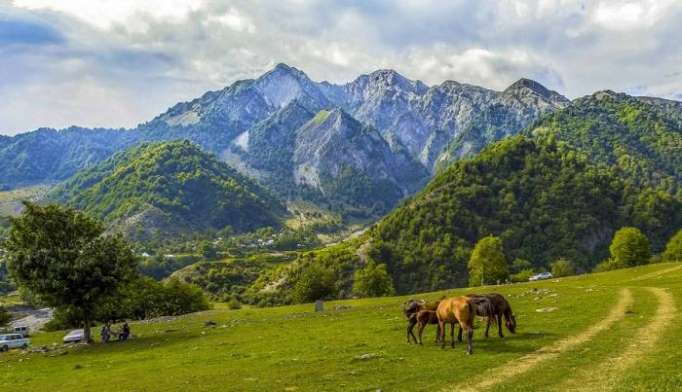
At a distance of 7 km from the center of the resort town of Gabala in the north of Azerbaijan, at an altitude of 1200 meters above sea level there is a village with a funny name Boom. It is home to over 5 thousand people. The village is famous for preserving oral and musical folk art. The local folklore ensemble is called "Zop-Zop", in honor of the shepherd's game. During the fun, two guys, wrapped in skins, depict camels, entertaining their friends. One of them crouches, and the rest, reciting verses, jumping through a friend, and then shouting "Anzli." It is accompanied by energetic melodies in the performance of the duo of national musical instruments: zurna and nagara.
In the village there are also historical monuments such as the Kilsedag temple - one of the first centers of the Christian religion, a fortress with underground rooms Govur of the XVIII century, Juma mosque, erected in 1882, the ancient house of Shikhmamed, etc.
Another picturesque village of Gabala - Vandam, is located 11 km from the center. Local residents joke that the famous actor Jean-Claude Van Damme, in fact, their countryman. In the village there are many orchards, a special place among them is occupied by apple-tree, where a variety of "Gizilahmed" apples is grown, which grows only in Ismayilli and Gabala regions.
Residents of the village are engaged in making jam and preparing canned food, which are widely represented on the counters of roadside markets throughout the Gabala district. The village also has a carpet weaving workshop and a wood carving workshop where you can buy souvenirs for memory.
The village of Vandam is in an extremely picturesque place, surrounded by wooded mountains, on the bank of a wide river. Here is the popular recreation area Duyma, where you can rent a comfortable room, filling your leisure time with fishing and horseback riding in the surrounding area.
Gizilagaj and other villages of Masalli
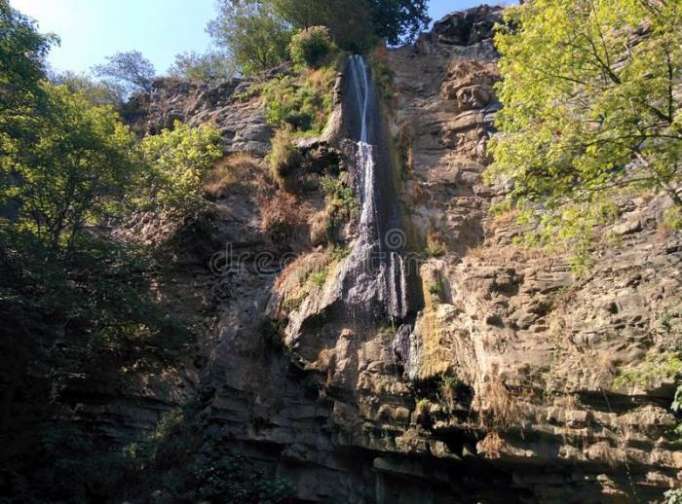
In the Masalli region, many picturesque villages in which you can get acquainted with the local history, traditions, way of life and mentality of southerners, as well as relax from the city bustle. The largest of the villages are Boradigyah, Erkivan, Sharafa, Banbashi, Gizilagaj, Taza Alvadi and others.
Situated 15 km from the center of Masalli, the village of Gizilagaj has an ancient history. In the village there is a mound of the Neolithic and Eneolithic epochs known as Hezi Tepesi. In the Middle Ages, Gizilagaj was a port that maintains trade relations with other ports of the Caspian Sea. His population went on a voyage, engaged in fishing. The sea caravan routes, going to Gilan and Mazandaran, also ran through Gizilagaj. For many centuries, Gizilagaj played a significant role in the trade relations between Europe and the Middle East.
Today there are 5,500 people living in the village. There are two secondary schools, a club, three libraries, a medical center, a post office. Among the attractions is a bathhouse built in the late 18th - early 19th centuries. In the vicinity of the village is the famous Gizilagaj Reserve.
Another large village of Masalli - Boradigyah, which has the status of a settlement, is also called the old Masalli, since it is believed that the base of the district was laid in this village, and only then the district center was moved to the present place.
It is necessary to mention the high-mountainous village of Shykhlar, from which a charming panorama opens up to the Vilyashchay reservoir and the Masalli district center. Most families in this village are engaged in beekeeping. Shykhlar is also famous for its fragrant quince, which is grown here in abundance. In this village the source of drinking water originates, which is supplied to the whole district center.
In another beautiful village - Khishkadyarya, there is the Masalli Ethnographic Museum, which contains over 8,000 exhibits reflecting the history of the region since the Eneolithic (4 thousand BC) and up to the XX century, many of which are unique.
One of the largest high-mountain villages of Masalli is the village of Bendalan. It is here that the most delicious barberry of the Talysh Mountains grows, the berries of which ripen from May to August. Dried ground barberry is widely used in the Azerbaijani cuisine as a seasoning for meat and fish dishes.
Erkivan village, where 18000 people live, is notable for being the record holder in Azerbaijan for population density. So, for one square kilometer of the area there are 220 people - this is even more than in China! In addition, this village is famous for its numerous springs, the total number of which exceeds 37.
Chinarly in Shamkir
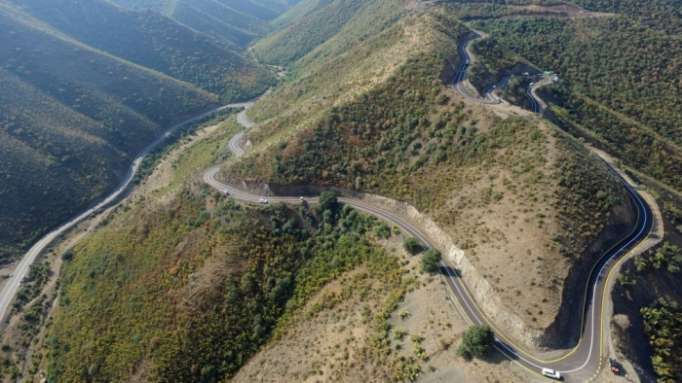
The village of Chinarly is located 15 km south of the city of Shamkir. It is known that it was founded by German colonists - descendants from Swabia, in 1888 and earlier was called Georgsfeld.
As a legacy of Swabians, there remained a magnificent old park, an area of 5 hectares. In former times, the dance floor, the House of Culture for the organization of leisure of the villagers, the Lutheran Church operated on its territory. If the dance floor and the House of Culture are well preserved, the church is in a dilapidated state. However, there is a hope that it will someday be restored.
A special charm to this park gives a lush vegetation, so thick that sometimes it seems as if you were in the jungle. The species composition of the flora contributes even more to this: along with huge cypresses and pines, fan-shaped palms are encountered at every step, a rare Indian nut grows, and, paradoxically, bamboo brought here by the Germans and growing along the park walls.
The Memorial was also erected in the park in memory of the victims of the tragic events in Azerbaijan on January 20, 1990.
Another attraction of the village of Chinarly is the old bridge, known for participating in the filming of some scenes from the famous film "Where is Ahmed?" - the golden classics of Azerbaijani cinema.
Demirchi village in Shamakhi

The ancient mountain village of Demirchi (Dəmirçi - "smith") located 30 km north of the city of Shamakhi, exists here since the time of the Caucasian Albania. From here it is not far (22 km) to the famous town of artisans - Lahic, in the neighboring Ismayilli region.
In the village of Demirchi now live about 80 families, and this is somewhere around 240 people. Previously, the prevailing occupation of the local population was blacksmithing, which is why the village got its name. For a thousand years, this village was strategically important, because there were forged weapons, horseshoes, carts, etc. Like in Lahic, from time immemorial there is a sewerage system, laid out of stone, which still operates. Until recently, Demirchi was engaged in carpet weaving. True, today traditional crafts are on the wane. However, there are still craftsmen here who are able to forge a sword. One of them is a hereditary blacksmith Agaguseyn Huseynov, a Tat by nationality.
Together with his sons Agagusain works in his own small workshop. Horseshoes and nails for them, knives, cutters, axes, braziers, rakes, etc. are made here. Traditional hand-held meat grinders (qeyməkəş) are still in great demand: when using them, mincemeat comes out especially juicy. There is also chasing and engraving of inscriptions on metal dishes and other items.
Guests are always welcome in Demirchi. Here you will be given tea and familiarized with blacksmith's craft. You can not only see, but also participate in the process of forging. And, of course, to buy some exclusive handmade product made of metal.
Instead of an afterword
In Azerbaijan there are hundreds of original settlements, each with its unique charm. The format of a small article does not allow you to tell at once about all interesting villages. But we have not even mentioned the ancient village of Khinalig in the Guba region, where they speak their own, unparalleled language, the Gabala village of Nidzh, where Udins live, professing Christianity or the village of Ivanovka in the Ismayilli region, where the Molokan Russians community has settled. These and other villages of Azerbaijan undoubtedly deserve a separate detailed narrative.
The original article was published in AzerTag.
More about: Azerbaijan








